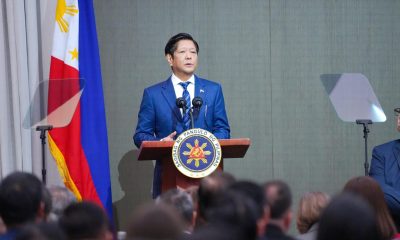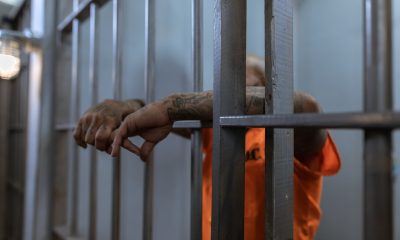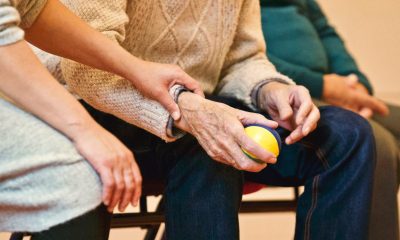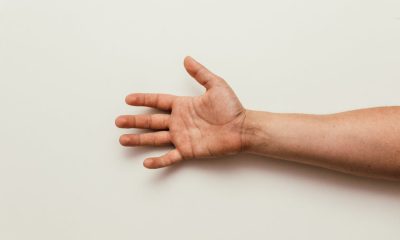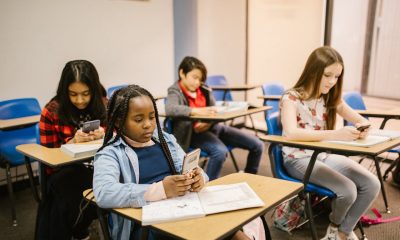Breaking
House panel okays Salceda’s Science for Change bill
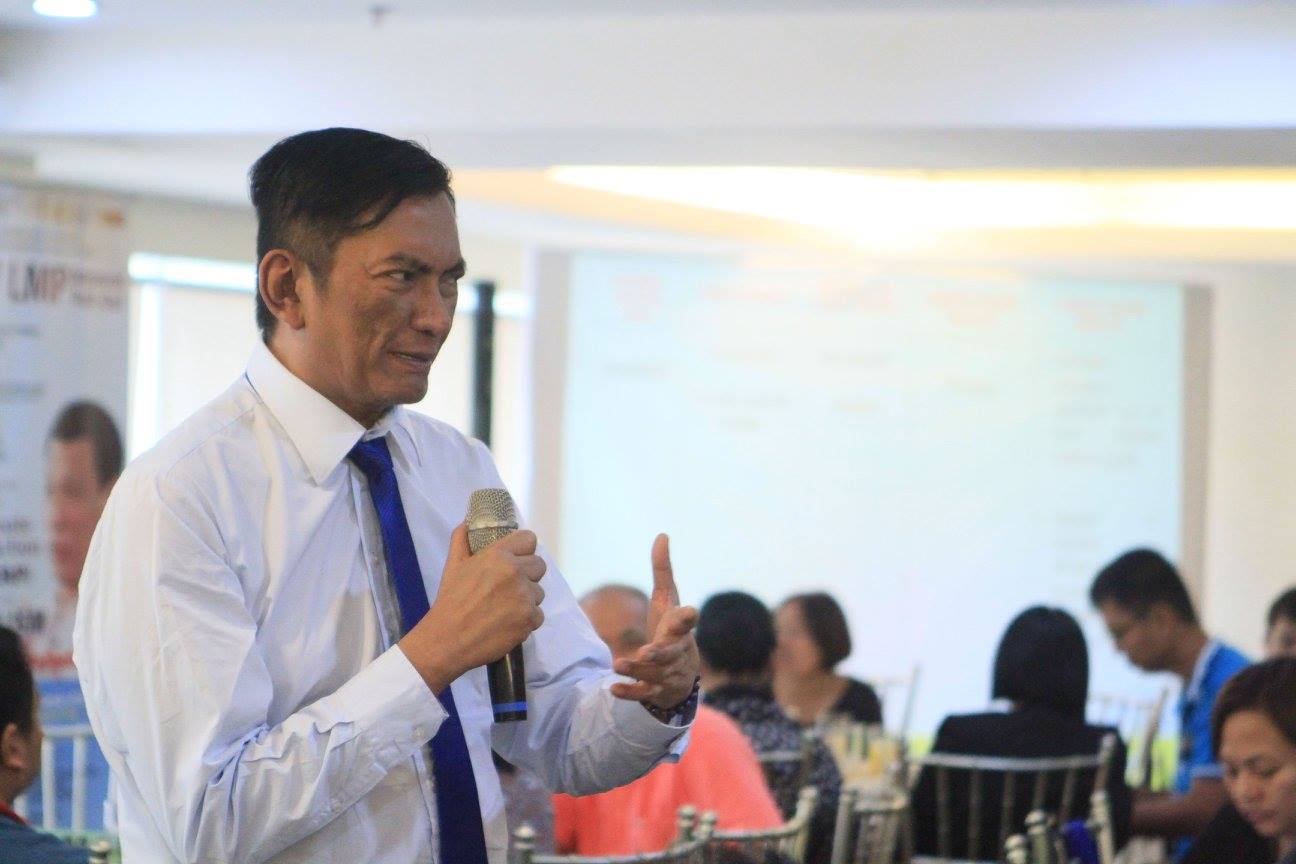
The House Committee on Science and Technology has approved House Bill 4581 filed by Albay Rep. Joey Sarte Salceda, which aims to boost the country’s scientific innovations and inventions, research and development towards social progress and global competitiveness. (Photo: Joey Sarte Salceda/Facebook)
MANILA—The House Committee on Science and Technology has approved House Bill 4581 filed by Albay Rep. Joey Sarte Salceda, which aims to boost the country’s scientific innovations and inventions, research and development towards social progress and global competitiveness.
Titled “Science for Change Program (S4CP) Act” with the theme of “Science for the People,” and a budget that could reach PHP672 billion by 2022, HB 4581 is designed to help accelerate science, technology and innovation (STI) developments and enable the country to keep up with current global technology and innovation trends.
S4CP was launched by the house committee on science and technology chaired by Bohol Rep. Erico Aristotle Aumentado. When enacted, it will be implemented by the Department of Science and Technology (DOST). It was hailed by legislators as a key towards higher standards of STI and global competitiveness.
The total R&D budget for 2017 is PHP5.8 billion. The bill proposes an estimated R&D budget which starts at PHP21 billion next year, more or less doubling yearly over the next five-year period, and could reach PHP672 billion in 2022.
Salceda said it is his privilege to push legislation for the country’s strong science and technology program, one of the vital components for growth under the Duterte administration. S4CP focuses on four core concerns: 1) Program Expansion, 2) New Programs, 3) S&T Human Resource Development, and 4) Accelerated R&D Program for Capacity Building of Research and Development (R&D) Institutions and Industrial Competitiveness.
Salceda said DOST will be guided over the next five years by the tagline “Science for the People” in its pursuit of R&D and S&T initiatives in 12 priority areas: R&D to address pressing problems; R&D for productivity; R&D to tap, manage and store Renewable Energy Resources; R&D to apply new technologies across sectors;
Disaster risk reduction and climate change adaptation; maximized utilization of R&D results through technology transfer and/or commercialization; accelerated R&D program for capacity building of R&D institutions; assistance to production sector; upgrading of facilities and improvement of S&T services;
Human Resource Development for S&T; utilization of state universities and colleges in the regions which do R&D and develop human resources in S&T, and; collaboration with industry, academe and international institutions.
For a country to be industrialized, the United Nations Educational, Scientific and Cultural Organization (UNESCO) recommends it should have 380 researchers, scientists and engineers (RSE) per million population doing R&D studies, and one percent of GDP should be invested in R&D. Based on a DOST 2013 R&D survey, the Philippines has 270 RSEs per million population only, hence the need to increase the number by 110 in the coming years.
S4CP target areas for R&D include health, food and nutrition; human security; agricultural and aquatic productivity; creative industries, tourism and services industries; nuclear science for health, agriculture and energy; and agriculture; renewable energy; Biotechnology for agriculture, health and environment; Space Technology and ICT development; Artificial Intelligence, and climate and environmental sciences, among others.
It gives special focus on “S&T education, training, and services” and supports “indigenous, appropriate, and self-reliant scientific and technological capabilities, and their application to the country’s productive systems and national life.”
S4CP is Salceda’s fifth bill aimed to revitalize the country’s S&T and may well put under its umbrella his four other bills — creation of a nuclear commission, revival of the Balik Scientist Program, creation of metrology institute to modernize and standardize the country’s measurement system, and creation of the country’s space agency.
The Albay lawmaker also recently authored a House Resolution urging a congressional investigation into the sad state of country’s information technology and computer science education, and formulate measures to enhance and improve the quality of teaching in these fields.
S4CP, Salceda stressed, must be provided sufficient budget to underwrite all R&D efforts for the 5-year period, as follows:1) Niche Centers in the Regions for R&D (NICER), PHP3.2 billion; 2) R&D Leadership Program (RDLead), P6 billion; 3) Collaborative R&D to Leverage PH Economy (CRADLE) for RDIs and Industry, PHP3.2 billion; 4) Business Innovation through S&T (BIST) for Industry, PHP14.25 billion; 5) R&D for industry sectors (at PHP50M to PHP100M per sector x 75); and 5) S&T HRD (STRAND, STAR, SRCUR).
Salceda noted that the country’s scientific and technological indicators have improved significantly in the last six years, based on the UNESCO benchmark. The Philippines has tried to comply with the UNESCO prescription of 380 researchers, scientists and engineers (RSEs) per million population and the percentage of the GDP expenditure on research and development of at least one percent. The total R&D budget for 2017 is PHP5.8 billion. The bill proposes an estimated R&D budget which starts at PHP21 billion next year, more or less doubling yearly over the next five-year period, and could reach PHP672 billion in 2022.
Based on DOST reports, Filipino RSEs have significantly increased from 180 in 2009 to 270 in 2013, while the budget of DOST has risen from PHP5.7 billion in 2009 to PHP20.8 billion in 2017, with R&D budget allocation increasing from PHP1 billion in 2009 to PHP5.8 billion in 2017. Salceda said, the Science Education Institute (SEI) and the Philippine Science High School (PSHS) which now has 16 regional campuses nationwide, have significantly contributed to the DOST HRD and the increase in RSEs.


